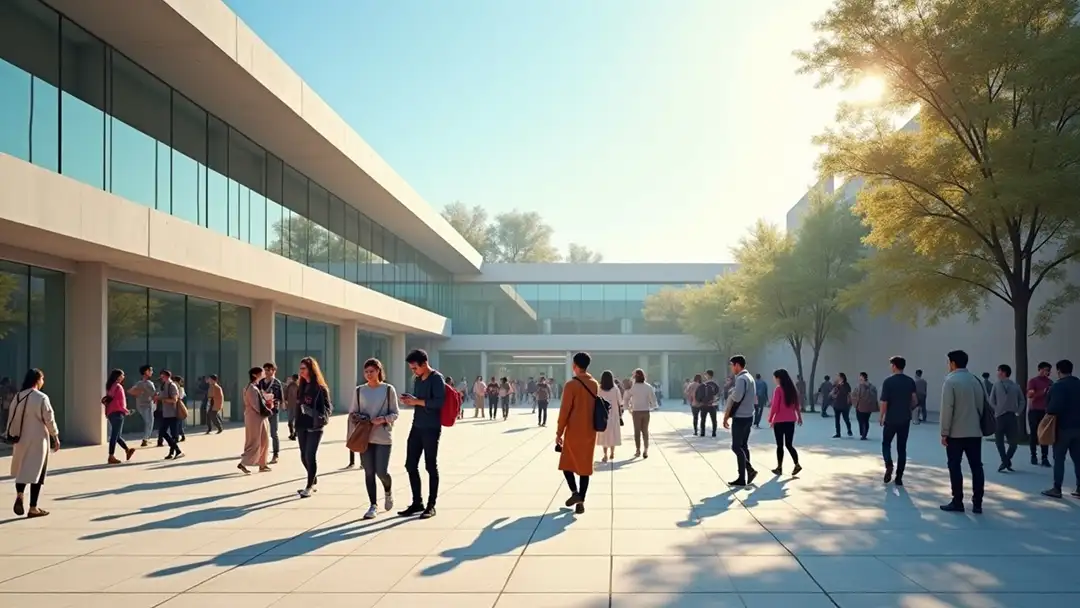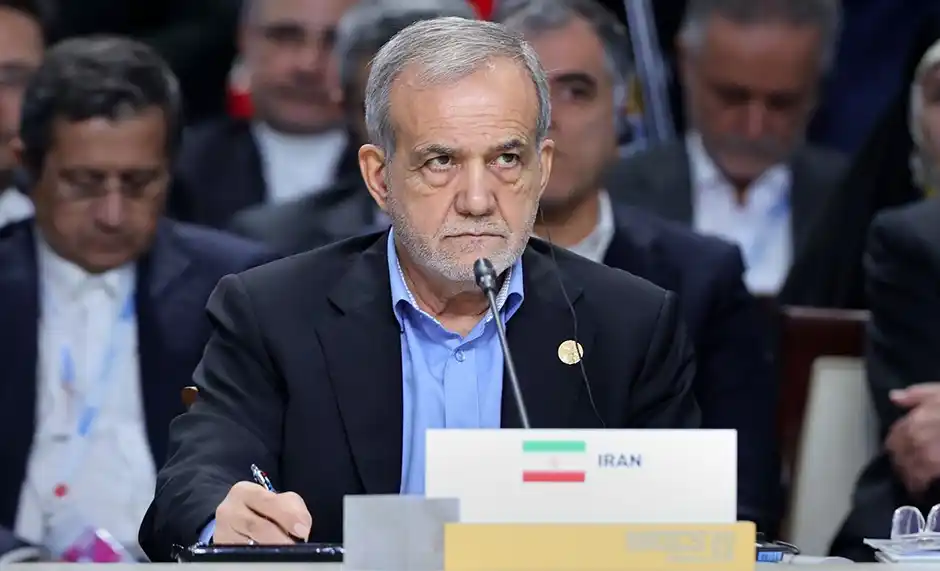How to Study in Iran as a Foreigner – Everything You Need to Know
Navigating Educational and Economic Opportunities

Choosing where to study abroad is more than just an academic decision—it can shape your career, expand your worldview, and open doors to emerging opportunities. For students seeking affordable education in a strategically important country, Iran offers a compelling and often underrated option. With a deep academic tradition, low living costs, and growing ties to global research and industry, studying in Iran has the potential to be a life-changing experience.
1. Why Study in Iran?
Iran is becoming an increasingly attractive destination for international students thanks to its unique mix of quality education, affordability, and growing economic relevance. Over the past two decades, Iran has heavily invested in its university system. Today, it hosts a wide range of institutions producing graduates in science, medicine, technology, and the humanities.
This growth is driven not only by government support but also by Iran’s youthful population and strong cultural focus on education. For foreign students, studying in Iran means joining a motivated academic community that is actively engaged in regional development and international research.
Beyond academics, Iran offers business-minded students access to a large, underexplored market. With ongoing reforms, a growing tech scene, and efforts to foster innovation, Iran allows students to build practical skills while exploring future career or investment opportunities in the region.
2. Top Universities in Iran
Iran has over 2,500 higher education institutions. Among them, several stand out for their academic excellence, international rankings, and strong ties to industry. These universities are often linked to national development strategies, startup ecosystems, and export-oriented research.
- University of Tehran: Iran’s flagship university, with strong faculties in law, economics, political science, and environmental studies.
- Sharif University of Technology: Known as “Iran’s MIT,” with global recognition in engineering, computer science, and innovation. It maintains strong partnerships with tech startups and research centers.
- Amirkabir University of Technology (Tehran Polytechnic): A major technical university offering a wide range of engineering disciplines and close collaboration with industry and infrastructure projects.
- Tehran University of Medical Sciences: One of the Middle East’s top institutions in medicine, public health, and pharmaceutical sciences.
- Isfahan University of Technology: Known for its research output in agriculture, mechanical engineering, and materials science.
- Ferdowsi University of Mashhad: One of the largest and oldest universities outside Tehran, providing broad academic offerings and regional outreach.
- Alzahra University: A leading women-only university, fostering women’s education in STEM, business, and the arts.
- Shahid Beheshti University: Located in northern Tehran, strong in law, computer science, and neuroscience.
- Tarbiat Modares University: A postgraduate-only institution focused on academic research and graduate education across all fields.
These universities often host technology parks, research institutes, and entrepreneurship centers. Foreign students benefit not only from academic credentials but also from integration into real economic projects, innovation labs, and industrial cooperation programs.
3. Admission Requirements for Foreign Students
Iranian universities welcome students from around the world, particularly from neighboring countries, Africa, and Asia. The admission process is centralized through the Ministry of Science (for most programs) or the Ministry of Health (for medical fields), though many universities also accept direct applications.
Standard application materials include:
- Valid passport
- Academic transcripts and diplomas (translated into English or Persian)
- Statement of Purpose (SOP)
- Letters of recommendation
- Proof of language proficiency (English or Persian)
- Application form (online or paper)
Graduate programs may require research proposals or interviews. Importantly, most Iranian universities do not demand GRE, IELTS, or SAT scores—especially if prior education was in English or if the student passes a local language assessment.
Iran’s inclusive policies make it easier for talented students from lower-income countries to access quality education. Furthermore, many universities assist international students with legal paperwork, residency, housing, and integration through their dedicated international offices.
4. Tuition Fees and Living Costs
Iran offers one of the most affordable study destinations in the region. Tuition fees vary by program and institution:
- Bachelor’s: $800–$1,500/year
- Master’s: $1,000–$1,800/year
- PhD: $1,500–$2,000/year
Living expenses are generally between $200–$400/month, depending on city and lifestyle.
Key Financial Insights:
- Energy is cheap due to heavy subsidies. Electricity, water, and gas cost significantly less than in neighboring countries.
- Fuel (gasoline) is extremely low-priced, which keeps transportation and logistics costs down.
- Currency fluctuations: Due to inflation and exchange rate volatility, the cost of imported goods (e.g., electronics, some books) may increase sharply, while local products like food, rent, and transportation stay relatively stable.
Example Monthly Expenses:
- University dormitory: $30–50
- Meals/groceries: $60–80
- Stationery & textbooks: $10–20
- City transport: $5–10
- SIM card & mobile internet: $3–5
- Canned food/snacks: $1–2 per item
Thanks to these low expenses, students can invest in learning Persian, joining conferences, traveling, or even launching side projects with local partners.
5. Visa and Residency
After university admission, foreign students apply for a Type S (Student) Visa through Iran’s Ministry of Foreign Affairs or consulate offices abroad. The process includes:
- Letter of admission
- Passport copy
- Visa application form
- Passport-sized photos
- Proof of funds/scholarship
Visas are typically processed in 4–8 weeks. Upon entry, students receive a temporary residence permit, renewable annually. Universities usually assist in managing this paperwork.
Student visa holders may participate in on-campus employment, research activities, and—depending on program—approved internships. This structure encourages real engagement with Iran’s academic, healthcare, or industrial sectors.
For students from countries with fewer Western visa options, Iran offers strategic access to the Middle East, Central Asia, and beyond.
6. Language of Instruction and Learning Persian
Most undergraduate programs are conducted in Persian (Farsi). However, many graduate programs—especially in medicine, engineering, and economics—now offer English-medium instruction or bilingual resources.
International students without Persian proficiency can enroll in intensive Persian language courses, often provided by the host university or institutes such as the International Center for Persian Studies.
Learning Persian offers distinct advantages:
- Read local academic materials and journals
- Participate in community events and research
- Build rapport with professors, employers, and peers
For those interested in business, development, or diplomacy in the region, fluency in Persian opens doors across Iran, Afghanistan, and Tajikistan.
7. Student Life in Iran
University life in Iran is active and inclusive. Major student cities—Tehran, Isfahan, Shiraz, Tabriz, and Mashhad—combine academic excellence with cultural depth, historic landmarks, and modern amenities.
Campuses offer affordable dormitories, dining halls, libraries, clinics, and sports facilities. Student unions organize clubs, workshops, field trips, and tech festivals. International students find the atmosphere welcoming, and many locals are eager to share Persian culture.
Student Testimonial:
Maria from Kenya, a graduate of Tehran University of Medical Sciences, shares: “I arrived with basic English and no Persian. But within two months, my classmates helped me adjust. I loved the food, the history, and the academic standards. Iran wasn’t just a degree—it became my second home.”
Daily life is also budget-friendly. Public transport, intercity buses, and even domestic flights are affordable. In smaller cities like Kerman or Yazd, living costs are even lower, making them ideal for long-term academic stays.
8. Economic and Business Opportunities
Iran isn’t just a study destination—it’s a growing economic frontier. Students gain exposure to real-world challenges in energy, agriculture, biotech, AI, and public health. Many universities have research agreements with industry, giving students access to innovation hubs, labs, and fieldwork.
Students can collaborate on:
- Business competitions and hackathons
- Public policy and development projects
- Health, environment, and social entrepreneurship
For aspiring entrepreneurs, Iran offers a cost-effective launchpad. Startups in fintech, e-commerce, and green technologies are emerging fast. International students who speak Persian and understand local needs are well-positioned to contribute—or lead.
For future consultants, development professionals, or investors, studying in Iran offers unmatched access to one of the Middle East’s most misunderstood but vital markets.
Summary Table: Key Information for Foreign Students
| Topic | Key Points |
|---|---|
| Tuition | $800–$2,500/year depending on program |
| Living Costs | $200–$400/month; utilities and food highly affordable |
| Language | Persian mostly; English more common in graduate studies |
| Visa | Type S visa; 4–8 week processing time |
| Opportunities | Internships, research, startup engagement |
Summary Table: Economic Benefits of Studying in Iran
| Benefit | Details |
|---|---|
| Low Costs | Tuition, housing, food, and public services are budget-friendly |
| Practical Market Insight | Understand real business conditions and consumer behavior |
| Academic-Industry Links | Access to labs, partnerships, and R&D with companies |
| Regional Advantage | Iran connects to Central Asia, the Persian Gulf, and South Asia |
Ready to Learn More?
If you’re considering a degree, research project, or business idea in Iran, we’re here to help. Contact us for:
- University recommendations
- Admission guidance
- Visa and travel assistance
- Personalized consultation
Discover the opportunity. Study in Iran. Build your future.






